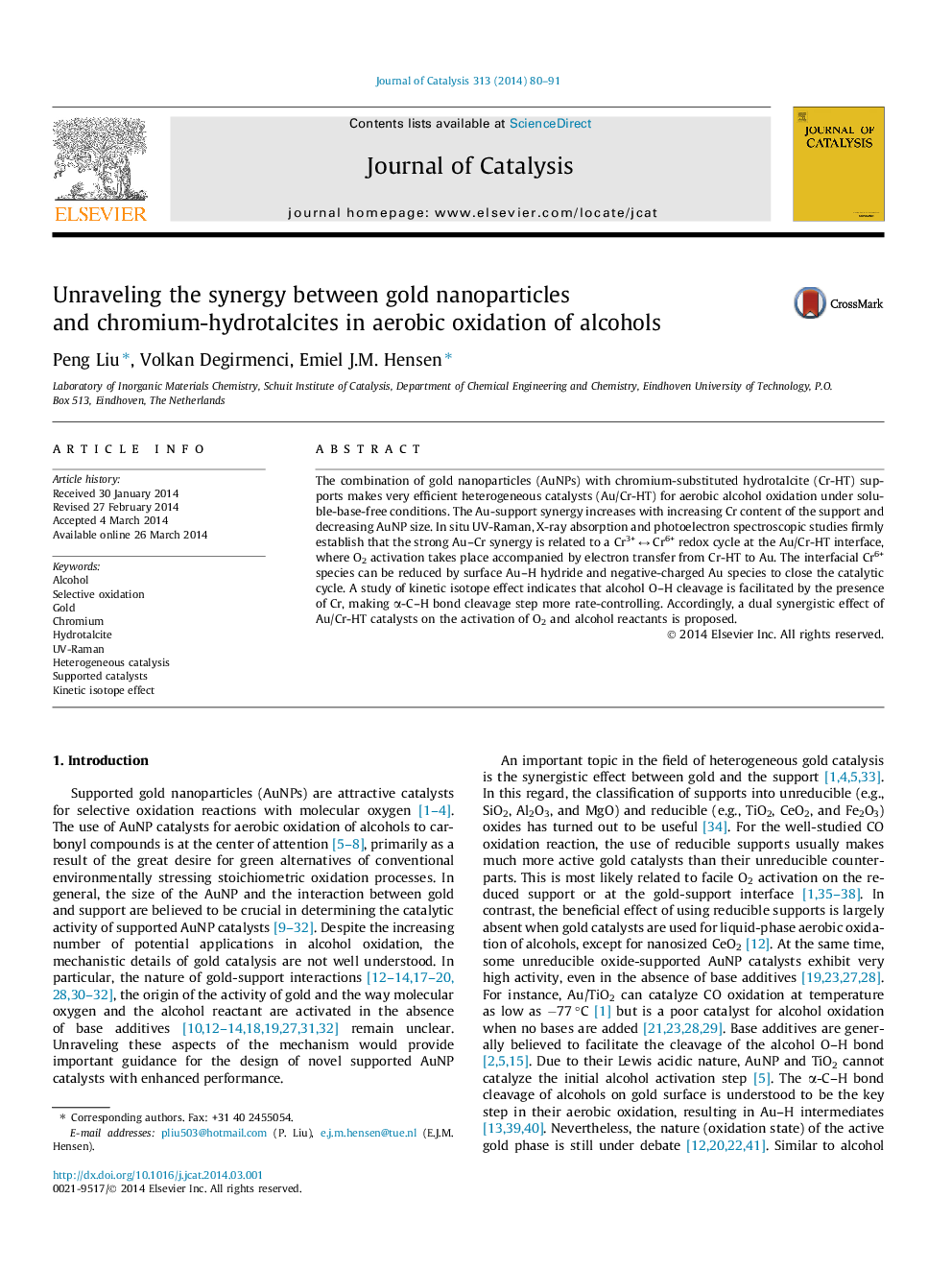| Article ID | Journal | Published Year | Pages | File Type |
|---|---|---|---|---|
| 61045 | Journal of Catalysis | 2014 | 12 Pages |
•Dual synergy between Au and Cr-hydrotalcite in liquid-phase alcohol oxidation.•Facile O2 activation by a Cr3+ ↔ Cr6+ redox cycle at the gold-support interface.•Electron transfer from Cr-hydrotalcite to Au during Cr oxidation.•α-C–H bond cleavage controls the rate to greater extent than O–H bond cleavage.•Increasing Cr content and decreasing Au particle size enhance Au–Cr synergy.
The combination of gold nanoparticles (AuNPs) with chromium-substituted hydrotalcite (Cr-HT) supports makes very efficient heterogeneous catalysts (Au/Cr-HT) for aerobic alcohol oxidation under soluble-base-free conditions. The Au-support synergy increases with increasing Cr content of the support and decreasing AuNP size. In situ UV-Raman, X-ray absorption and photoelectron spectroscopic studies firmly establish that the strong Au–Cr synergy is related to a Cr3+ ↔ Cr6+ redox cycle at the Au/Cr-HT interface, where O2 activation takes place accompanied by electron transfer from Cr-HT to Au. The interfacial Cr6+ species can be reduced by surface Au–H hydride and negative-charged Au species to close the catalytic cycle. A study of kinetic isotope effect indicates that alcohol O–H cleavage is facilitated by the presence of Cr, making α-C–H bond cleavage step more rate-controlling. Accordingly, a dual synergistic effect of Au/Cr-HT catalysts on the activation of O2 and alcohol reactants is proposed.
Graphical abstractFigure optionsDownload full-size imageDownload high-quality image (193 K)Download as PowerPoint slide
